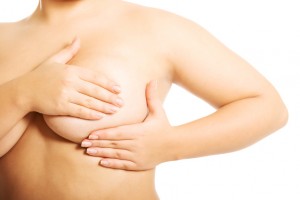Statistics confirm that 1 in 8 women will develop breast cancer over the course of a life-time, and 232,340 new cases of invasive breast cancer will be diagnosed this year. We also know that if breast cancer is detected early and treated before it spreads, the five year survival rate is 98%, and there are now over 2.6 million breast cancer survivors in the US.
With facts and figures like these, it is clear that as a woman, you can beat this potentially fatal disease. But, women need to know their individual risk factors for breast cancer, and follow through with routine screenings to identify breast abnormalities and potential malignancies in the early stages… before there are symptoms. And, the absence of symptoms usually means that the cancer is smaller and less likely to have spread.
The American Cancer Society recommends clinical breast examinations every 3 years (during routine office visits) for women in their 20s and 30s and once a year after age 40. Women 40 and older should have yearly mammograms. And, an additional screening option for women who are at high risk (greater than 20% lifetime risk) is magnetic resonance imaging (MRI).
But, breast awareness and breast self-examination (BSE) should start early as a first line of defense in detecting any type of anomaly in your breasts. The American Cancer Society suggests starting BSE at age 20. But, regardless of your age, know how your breasts look and feel normally, and report any changes to your healthcare provider immediately. Doctors need to discuss the importance of breast awareness with women and give instruction on the correct technique of BSE. If your doctor has not done this with you, ask her to show you at your next visit. Even women with breast implants can do BSE, but should have their surgeon identify the edges of the implant so they recognize what they are feeling.
Your doctor will probably advise you to do monthly BSEs after your period. Between periods use a less systematic approach by simply feeling and looking at your breasts while showering or getting dressed. And, always have your doctor review your technique at subsequent appointments. Also, the American Cancer Society provides pamphlets and online information that shows diagrams and gives instructions on how to examine your breasts.
A perfect example of the importance of breast awareness and self-examination is a recent case involving a 32 year old woman. She had gynecological exams regularly and often examined her breasts at home, so she was aware of how they looked and felt normally. When she noticed a lump in her breast that had not been there before, she immediately went to her doctor. Upon examination, he diagnosed a non-cancerous condition. Since she was young and did not appear to have any obvious risk factors for breast cancer, he gave her the options of wait and see or removing the lump. She followed her instinct and had it removed, and the biopsy showed that it was a malignant tumor. Luckily, it was caught early, and after chemotherapy and radiation she is doing fine. Had this young woman assumed that she was not at risk for cancer because of her age and had not had been as diligent in doing BSE; her outcome may have been very different.
Women are often fearful of what they might find when examining their breasts. If you should notice a change or feel a lump, you naturally will be apprehensive and worry that it may be cancer. But, this is not necessarily so, it just means that you need to get to your doctor (without delay) for more screening. If the lump is malignant, remember, you and your doctor caught it early before symptoms. And, just like the young woman in the example, you gave yourself the best possible chance of being a breast cancer survivor.
